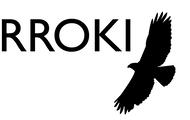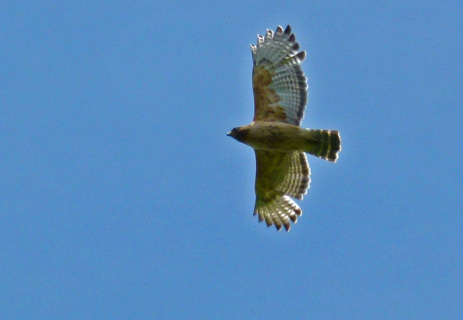RED-SHOULDERED HAWKS

An adult Red-Shouldered Hawk's breast is rufous (orangey) with fine horizontal barring. The tail is black with 3-4 narrow white bands. The immature's breast is light with dark brown vertical streaking, while the tail is dark brown with many fine light brown bands. The red shoulders (actually the wrist of the bird) are difficult to spot at a distance. The wings are rounded with distinctive white bars on the primaries and secondaries with a buff-colored, almost translucent "window" visible when soaring. Red-Shouldered Hawks have longer tails than Red Tailed Hawks. They are highly vocal, "keer, keer, keer," and will often be heard before they are seen. The Blue Jay frequently mimics the calls of the Red-Shouldered Hawk, providing information to other jays that a hawk is around, or maybe to deceive other species into believing a hawk is present so the Jay can raid the nest.
Although this species will forage in wooded or open habitats, they show a strong preference for wooded areas near water. They are the diurnal counterpart of the Barred Owl, sharing the same habitat and prey selections, including small mammals, snakes, lizards, frogs, toads, insects and small birds. The hawk pair will build a nest or refurbish an old one against a tree trunk, consisting of sticks and linesd with bark, moss and green vegetation. An average clutch is 3 eggs, which the female incubates for about 33 days. The chicks are ready to fledge by about 45 days, although the parents will continue to feed them for another 8-10 weeks.



